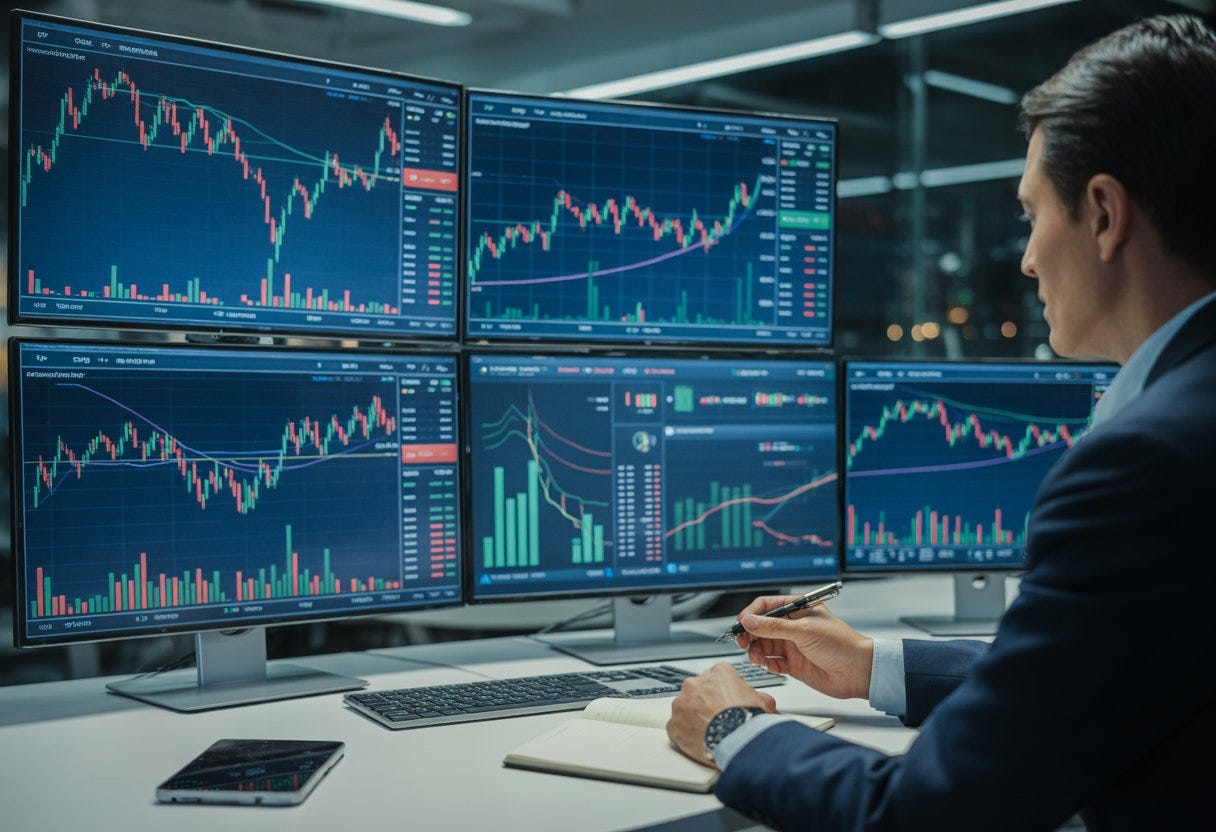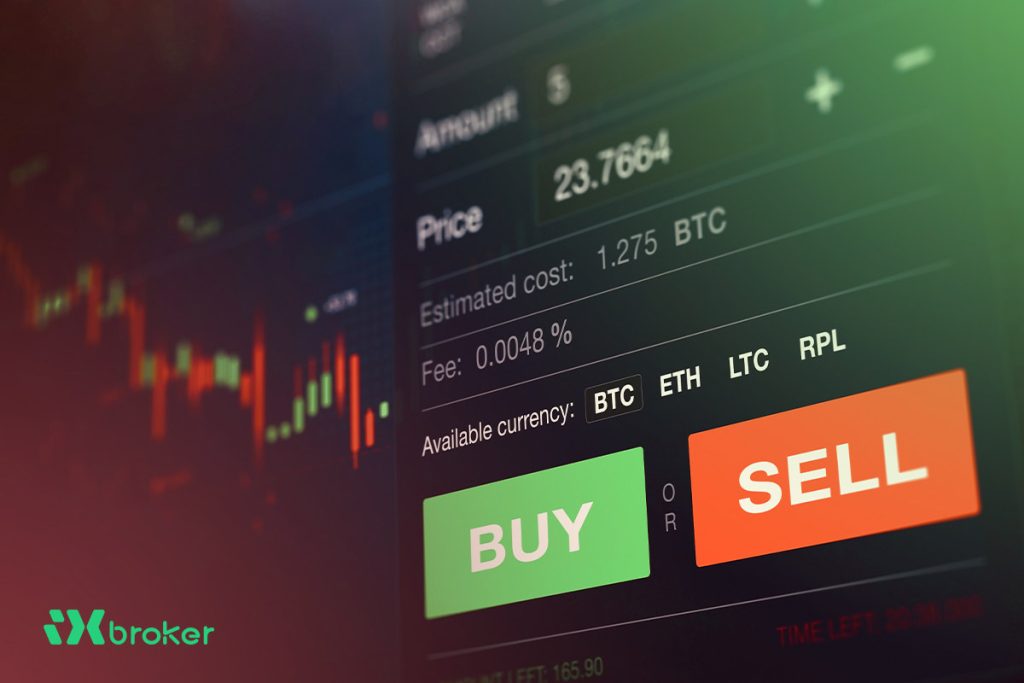Introduction
Today’s financial world is more interconnected—and more fragile—than ever. As brokers, traders, and investors, we recognize that it’s not just the actual events that shake markets, but even the fear and anticipation of what might come next. Uncertainty, often triggered by macroeconomic shocks, wars, or political crises, is a prime mover of global markets—and a silent killer of unprepared portfolios.
Most coverage of market shocks stops at the headlines: stocks fall, gold rallies, bonds move. But beneath the surface, a complex web of psychological, structural, and risk-driven channels is at work. Understanding these real drivers, especially the “risk premium” channel of uncertainty, is crucial for investors and market participants who want to trade profitably and manage risk intelligently.
In this article, we dive deep into the latest academic research—anchored in the recent paper “The risk-premium channel of uncertainty: Implications for unemployment and inflation”—and extract high-impact insights for the iXbroker trading community. You will learn why uncertainty moves markets even without new economic data, how slightly invisible mechanics change both unemployment and inflation, and most importantly, what you can do as a smart trader to stay ahead.
- Why Uncertainty Is More Dangerous Than You Think
It’s a trader’s cliché: “Markets hate uncertainty.” But what’s less understood is why uncertainty is so disruptive—often even more so than negative news itself.
Key Insight:
When the future becomes less predictable, both consumers and companies pull back. Households spend less, firms hesitate to hire, and overall risk appetite vanishes. But there’s a deeper financial channel: risk premia.
The Risk-Premium Channel Explained:
Traditionally, theory suggested that greater uncertainty would encourage households to save more, hoping to smooth future hardships—a force that could, in some conditions, even fuel investment. But real-world data resist this. In reality, when uncertainty about future productivity rises (be it due to a pandemic, war, or political instability), the value of firms—expressed in asset prices—drops, not grows.
This happens because asset prices reflect not only expectations of future profits, but also the riskiness (volatility) of those profits. When assets’ future payoffs become more volatile and move in sync with the broader economy (i.e., become riskier), investors demand a bigger premium—higher returns—to hold them. That higher risk premium pushes current asset prices down, discouraging new firm entry, and ultimately raising unemployment.
What Traders Should Watch For:
- Spiking volatility indexes (like VIX, MOVE, or cross-asset equivalents) often signal rising risk premia.
- Correlation shifts between market sectors can hint at systemic uncertainty, not just idiosyncratic (company-level) risk.
- How Uncertainty Drives Unemployment and Inflation (Beyond the Headlines)
Traditionally, heightened uncertainty is associated with higher unemployment and lower inflation. But why?
Mechanics:
- Unemployment: Rising risk premia mean less incentive for firms to enter the market or hire, so fewer jobs are created.
- Inflation: Since economic output falls when both demand and supply contract, price levels may drop, but not as sharply as in pure demand-driven recessions.
A critical discovery highlighted in the referenced research is that the risk-premium channel explains more than half of the rise in unemployment following an uncertainty shock. Without the risk premium mechanism, the impact on unemployment would be less than half as large.
Actionable Trading Advice:
- Track labor market indicators (unemployment rate, job postings, wage growth) parallel to volatility and risk premium indicators.
- During episodes of macro uncertainty (wars, pandemics, policy crises), expect labor market weakness to persist longer than “headline risks” suggest.
- Why Not All Uncertainty Is the Same: Demand Shocks vs. Risk-Premium Shocks
This is a core message often missed by both the media and even seasoned traders: Not all uncertainty is created equal.
- Demand-side shocks (like a sudden cut in government spending) typically lower both output and inflation, via weaker demand.
- Risk-premium-driven uncertainty shocks reduce output just as much—but with a far milder drop in inflation.
Why?
With uncertainty, risk premia rise and asset prices drop, causing hiring and investment to slow even without a strong drop in consumer demand. Unemployment goes up, but the effect on inflation is modest: both demand and supply shrink together, balancing price pressures.
For market practitioners:
- Expect less central bank “firepower” to counter uncertainty-driven shocks than classical demand crises. Rate cuts alone can’t fully restore confidence if risk premia remain elevated.
- Inflation may prove stickier than the bears expect during risk-driven recessions.
- The Power (and Limits) of Monetary Policy in Uncertain Times
Central banks are the default first responders to economic turbulence. But according to the “risk-premium channel” thesis, their power to neutralize uncertainty-driven contractions is limited.
Monetary policy can:
- Offset some of the negative impact by bolstering demand.
- Stabilize inflation expectations and financial conditions, to a point.
But monetary policy cannot:
- Make firms and investors less risk-averse or reduce the perceived volatility of future profits.
- Eliminate the risk premium that investors demand for holding risky assets during periods of heightened uncertainty.
Trader takeaway:
Never bet solely on central banks to “save the day” during true uncertainty waves. Use policy rallies to reduce risk, not to double down on positions that rely on full normalization.
- Practical Market Applications: Strategies for Navigating Uncertainty
Let’s convert the research into market-ready playbooks:
- Asset Allocation and Portfolio Diversification
- Stay nimble: Dynamically adjust portfolio beta. Reduce leverage and high-beta exposures when uncertainty shocks loom.
- Raise quality: Focus on assets and sectors with strong balance sheets, defensible cash flows, and lower default risk.
- Diversify by risk factor, not just geography or sector: Correlations tend to spike in crises—real diversification means exposure to uncorrelated risk premia (e.g., volatility strategies, trend-following, gold, cash-equivalents).
- Hedging for Heightened Risk Premia
- Volatility products: Options (index or sector), volatility ETFs, and VIX futures become especially valuable during these periods.
- Safe havens: Government bonds (especially US treasuries, Swiss franc, Japanese yen), precious metals, and defensive utilities.
- Avoid the FOMO trap: When everyone crowds into “safe” assets, relative valuations quickly become stretched. Track entry/exit, and don’t overpay for hedges.
- Tactical Trading Ideas
- Event-driven fades: Markets often overreact to uncertainty headlines. Well-capitalized traders can fade extreme dislocations—provided risk controls and stop losses are strictly enforced.
- Cautious risk-on trades after “peak fear”: Wait for signs that risk premia are falling (e.g., narrowing credit spreads, declining implied volatility) before adding risk.
- Trader Psychology in Uncertain Environments
Perhaps the most underestimated element: psychology. In highly uncertain periods, decision fatigue, fear of missing out, and anchoring to past norms can sabotage even the best strategy.
Pro tips:
- Stick to your plan: Predefine risk limits, stop losses, and rebalancing rules before volatility strikes.
- Reduce position sizing: Smaller trades can dampen emotional overreactions and reduce the urge to “revenge trade.”
- Embrace adaptive thinking: Recognize that uncertainty shocks may last longer (and resolve more slowly) than initial forecasts.
- Lessons for Institutional and Retail Investors Alike
While the research is grounded in macroeconomics, its lessons apply at every scale:
- Institutional portfolios with rigid mandates (e.g., pension funds, insurance) need dynamic risk monitoring to avoid forced selling in the worst of times.
- Retail traders should focus on personal liquidity, consider dollar-cost averaging as a buffer, and avoid overexposure to speculative trades.
All market participants benefit by understanding that “waiting for clarity” is not a passive strategy—it is often the safest.
- Frequently Asked Questions (Trading in Uncertainty)
Q: Can macro uncertainty shocks create both opportunities and risks for traders?
A: Absolutely. Volatile times breed both big winners and losers. The key is agility, discipline, and a clear-eyed understanding of hidden risks.
Q: Beyond headline risk, what technical indicators help spot rising uncertainty?
A: Monitor volatility surfaces (not just implied vols, but skew and term structure), credit-default swap spreads, and cross-asset correlation matrices.
Q: Which assets usually outperform during spikes in macro risk premium?
A: Safe havens (US Treasuries, gold), low-beta defensive stocks, and, in some cases, volatility-linked products.
Q: Is now a good time to “buy the dip” during uncertainty-driven sell-offs?
A: Only with strict risk controls! Research shows risk-premium shocks are persistent, meaning “bottoms” may take longer to form than many traders expect.
Conclusion: Building Resilient Trading Systems for an Uncertain World
The risk-premium channel—where the rising fear of volatility itself drives markets lower—is not just a theoretical curiosity. It’s a real, measurable force moving prices in modern financial markets. For traders and investors, especially those active in global economies subject to shocks, understanding these invisible undercurrents is a vital edge.
Do not ignore the psychological factor: Recurring uncertainty—be it war, recession talk, or political gridlock—will test your discipline and adaptability. The tools for survival remain the same: robust risk management, strategic diversification, tactical hedging, and—above all—the willingness to stay rational when emotion runs high.
Ready to trade smarter? The next time volatility rears its head, remember: it’s not the event, but how markets price for the “unknown unknowns,” that makes all the difference.




